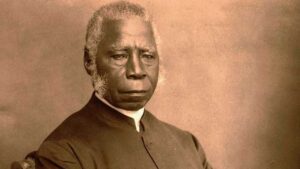Introduction
The Cathedral Church of St. Peters, Ake, Abeokuta, stands as the oldest church in Nigeria. Situated in Abeokuta, the capital city of Ogun State in southwestern Nigeria, this cathedral traces its roots back to the mid-19th century when it was erected during the missionary activities of the Church Missionary Society (CMS) in Nigeria.
Construction of the cathedral commenced in 1843 and concluded in 1864. Serving a pivotal role in the propagation of Christianity in Nigeria, its establishment marked a significant milestone in the nation’s Christian history. The Cathedral Church of St. Peters is not merely a religious site; it is a historical and cultural landmark that reflects the early missionary endeavors in Nigeria.
Historical Significance and Missionary Connections

The church is closely intertwined with the missionary activities of Samuel Ajayi Crowther, a man with a remarkable life story. Originally named Ajayi, he was captured by Fulani slave raiders around the age of 12 and sold into slavery. His fate took a turn when the British navy, patrolling the West African coast to suppress the transatlantic slave trade, liberated him. In 1822, Crowther found himself in Sierra Leone, a British colony established as a resettlement location for freed slaves.
There, he received education and was baptized as Samuel Crowther by the Church Missionary Society (CMS), a Protestant missionary society. Crowther went on to become a teacher and interpreter, actively assisting the missionaries in their endeavors.
Ordained as a minister by the CMS in 1843, Samuel Ajayi Crowther returned to Nigeria as a missionary. His contributions were pivotal in the spread of Christianity in Nigeria, including translating the Bible and hymns into the Yoruba language. These efforts played a crucial role in the establishment of Christian missions and the growth of the Anglican Church in Nigeria.
Architectural and Cultural Symbol becoming a legacy
The Cathedral Church of St. Peters, still standing today, serves as an enduring architectural and cultural symbol, showcasing a harmonious blend of European and indigenous Yoruba architectural styles. The building incorporates elements of Gothic architecture, a style often associated with early European churches, combined with local materials and craftsmanship.






















